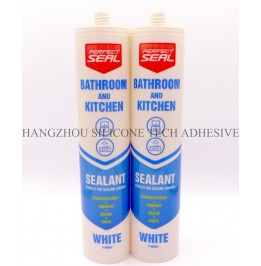Bathroom sealants play a critical role in preventing water damage, mold growth, and structural deterioration. However, their effectiveness depends heavily on environmental conditions during and after application, particularly humidity levels. Fluctuations in moisture content can disrupt curing processes, adhesion, and long-term durability, leading to costly repairs if not managed properly.

High humidity environments can prolong the curing time of water-based sealants, as excess moisture in the air prevents proper evaporation of solvents. Conversely, low humidity conditions may cause solvent-based sealants to cure too rapidly, leading to surface cracks or incomplete adhesion. Studies indicate that a 40–60% relative humidity range is optimal for most sealant types, though deviations beyond this range can compromise performance.
Humidity fluctuations during curing affect the chemical bonding between sealants and substrates. When moisture levels rise above 70%, silicone-based sealants may develop a weak, chalky surface layer, reducing their ability to bond with tiles or bathtubs. In arid conditions, rapid drying can prevent the sealant from penetrating porous surfaces like stone or concrete, leading to peeling within months.
Rapid changes in humidity—such as moving from a humid application environment to a dry climate—can trap air beneath the sealant. This creates bubbles or voids that compromise waterproofing. For example, a bathroom renovated in a coastal area with high morning humidity but low afternoon dryness may exhibit visible defects within weeks of application.
Persistent high humidity (above 75%) after sealant application creates ideal conditions for microbial growth. Even if the sealant initially cures correctly, prolonged exposure to damp air can lead to discoloration, odor, and degradation. In contrast, low humidity environments may dry out sealants prematurely, causing shrinkage and gaps that allow moisture ingress.
Bathrooms often experience temperature swings alongside humidity changes, such as from hot showers to cold nights. Sealants expand in humid conditions and contract when dry, leading to stress fractures over time. This is particularly problematic in joints between dissimilar materials, like tile and metal fixtures, where differential movement can cause cracks.
UV exposure combined with humidity fluctuations accelerates the breakdown of sealant polymers. In bathrooms with poor ventilation, yellowing or brittleness may occur within a year, even if the sealant was rated for “indoor use.” This degradation weakens the material’s ability to resist water penetration, increasing the risk of leaks.
Before applying sealant, use dehumidifiers to reduce indoor humidity to the manufacturer’s recommended range (typically 40–60%). In dry climates, humidifiers can prevent rapid solvent evaporation. Testing substrate moisture levels with a pinless meter ensures surfaces are dry enough to avoid trapping moisture beneath the sealant.
Maintain consistent humidity levels for at least 72 hours after application to allow proper curing. Avoid opening windows or using fans that create uneven airflow. In climates with extreme seasonal changes, consider using a hygrometer to track fluctuations and adjust ventilation accordingly.
Check sealant joints biannually for signs of cracking, peeling, or discoloration. Reapply sealant in areas where humidity has caused visible degradation. For bathrooms in humid regions, prioritize mold-resistant formulations, though note that no sealant is entirely immune to prolonged moisture exposure.
The performance of bathroom sealants hinges on managing humidity during and after installation. By understanding how moisture affects curing, adhesion, and longevity, homeowners and contractors can implement strategies to ensure durable, waterproof seals that withstand environmental stresses.
Copyright 2019 by Hangzhou Silicone Tech Adhesive Co., Ltd. All rights reserved.
Bathroom Sealant | Acrylic Sealant | Dow Corning 795 | Aquarium Sealant | Dow Corning 732 | Clear Silicone Sealant | Polysulfide Sealant | Glazing Sealant | Mirror Sealant | IG Sealant
Powered by Onepound